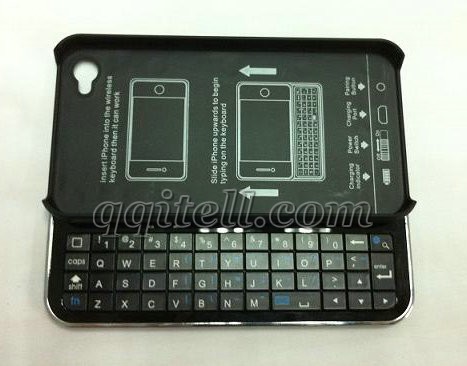
Like us on Facebook
Even though there are some shortcomings, such as lack of expandable memory, Google Nexus S is still quite appealing to smartphone lovers.
On the other hand, Motorola Droid 3 was released on July 7, which is a successor of the Droid 2. it comes with a 4-inch qHD display and claims to have a 30 percent faster graphics chip than its predecessor, but it also sports a larger 5-row keyboard.
Verizon that carries DROID 3 claims it is the world’s thinnest full QWERTY smartphone, and still delivers the power of a dual-core 1 GHz processor for fast multi-tasking.
Droid 3 also runs on Android 2.3 and equipped with a brilliant 4-inch qHD display, a 5-row QWERTY keyboard and 3G Mobile Hotspot capabilities, with the ability to connect up to five Wi-Fi-enabled devices.
Verizon is selling Droid 3 for $199.99 with a new two-year customer agreement. Customers that purchase a DROID 3 will need to subscribe to a Verizon Wireless Nationwide Talk plan and a smartphone data package.
Here is a comparison between Google Nexus S and Motorola Droid 3:
Size: Google Nexus S is merely 0.43-inch thick and weighs about 4.55 oz. Droid 3 is 0.51-inch thick and weighs 6.49 oz.
Display: Nexus S features a super-sized 4-inch Super AMOLED display with 800×480 screen resolution. it has a slightly curved surface of what Samsung called “Contour Display”. the glass covering the display, however, has a slight curve to its exterior surface, which can fit more comfortably against your head than the typical flat display.
Droid 3 has a razor-sharp 4-inch quarter high-definition touchscreen with 960×540 screen resolution. it has Corning Gorilla glass.
Processor: the Nexus S sports a single-core 1GHz ARM Cortex A8 (Samsung Hummingbird) chipset with 512MB RAM. Droid 3 is powered by dual-core 1GHz OMAP4 chip from Texas Instruments with 512MB RAM.
Operating System: both the phones run Android 2.3 or Gingerbread juice, but Nexus S is considered to be the first phone to run Gingerbread. However, they optimize the OS with their own UI. Droid 3 ships with Motorola’s Blur UI. Instead of a custom Samsung UI overlay, Nexus S offers a pure Android experience.
Camera: Nexus S comes equipped with an 5MP rear-facing with LED flash and a VGA front-facing camera. but Droid 3 sports a 8MP camera with LED flash. Meanwhile, Droid 3 offers 1080p HD video capture capability, but Nexus S offers 720p DVD video capture capability.
Memory: Nexus S comes in 16 GB internal memory configuration. On the other hand, Droid 3 comes with 16GB on-board memory, with microSD card slot for up to an additional 32GB.
WLAN/Bluetooth/USB: the Wi-Fi 802.11 b/g/n DLNA is common in both the smartphones. the Bluetooth version found in Nexus S is 2.1 with EDR while Droid has 2.1 version with A2DP and EDR support. Although USB version 2.0 is featured in both the smartphones, Nexus S also has NFC hardware.
3G: Nexus S has HSDPA 7.2 Mbps and HSUPA 5.76 Mbps support, while Droid 3 supports 14.4 Mbps HSDPA and 5.76 Mbps HSUPA.
Battery Backup: Nexus S comes with a battery capacity of 1500 mAh, which offers talk time of up to 14 hours in 2G and 6 hours in 3G. Meanwhile, the standby time comes around 713 hours in 2G and 427 hours in 3G. On the other hand, Droid 3 comes with a batter capacity of 1540 mAh, which offers talk time of up to 9 hours and standby time of up to 300 hours.
Pricing: Nexus S is priced at $99.99 in Best Buy Web site with two-year contract each from AT&T and T-Mobile. but with a two-year Sprint contract, you get Nexus S at $0.00 in Best Buy. On the other hand, Droid 3 is priced at $199.99 in Best Buy Web site with two-year Verizon contract.